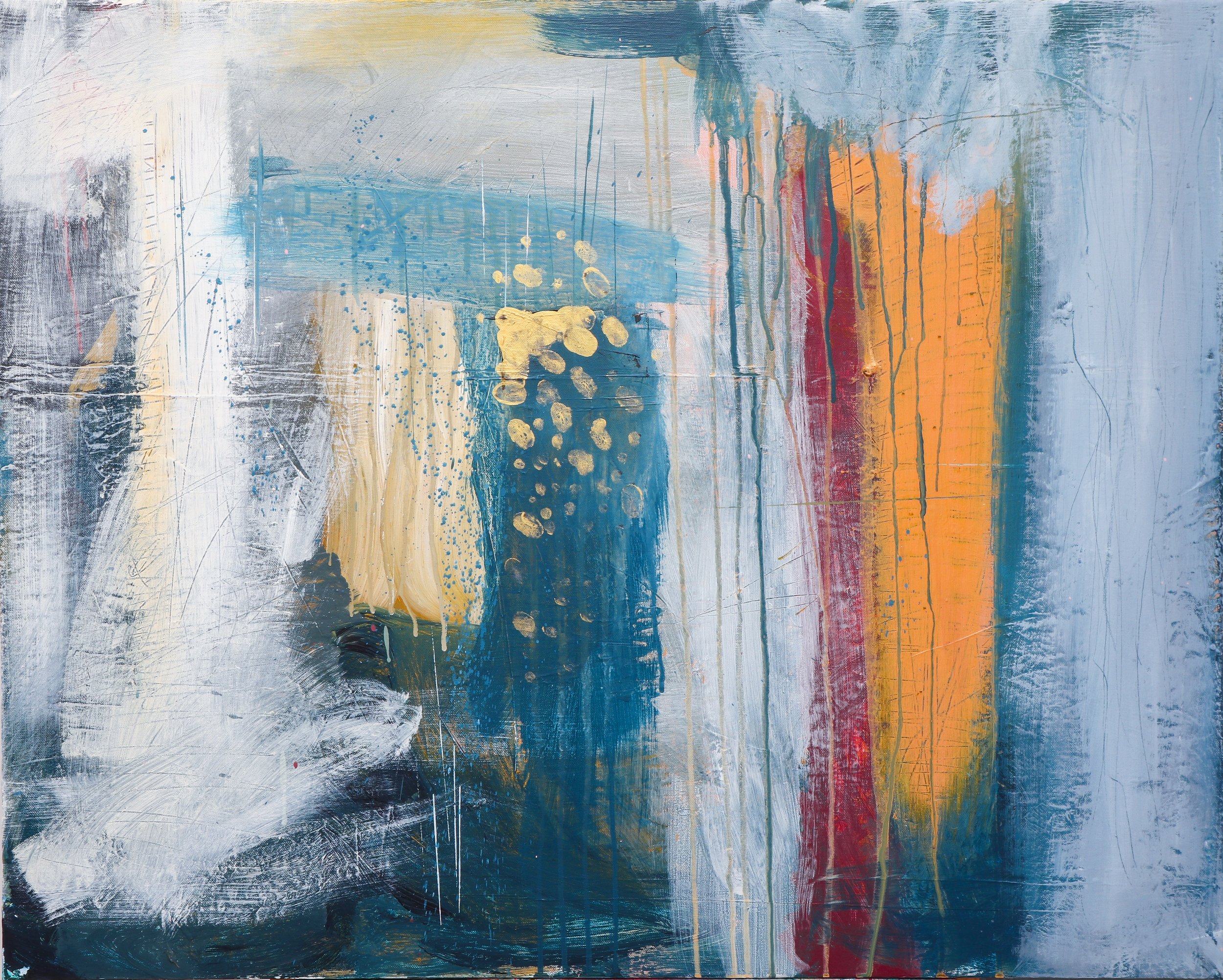Space DASCA
Davide Scalcon
Artist Statement
‘When he works, he is pulling at emotions that were previously distant. His paintings are a sensitive reaction to his inner landscape, represented and driven by colour.’
For Davide Scalcon, painting is a space of refuge. Whether working on the contemporary or abstract strands of his practice, the act of painting encourages an unconstrained spontaneity. Working in a highly demanding workplace, painting is where Scalcon can detach from the daily routine and rediscover himself. This understanding of painting as not just an activity but as a tangible space to explore, created the name ‘Dasca.’ The name is a combination of the initials of his first and second name, representative of a creative arena where he can redefine the self.
This has become particularly poignant in his latest body of work. After years of experimenting with materials and styles Scalcon has found his aesthetic ‘voice’. Due to a turbulent period, Scalcon took a break from painting. When he returned to the canvas, he discovered that his motivations had shifted. Instead of being inspired by nature to paint, he found that he was tapping into something deeper. When he works, he is pulling at emotions that were previously distant. His paintings are a sensitive reaction to his inner landscape, represented and driven by colour.
He begins with a colour that he wants to explore, informing the others that follow. Although an intuitive initial process, it is not a frenetic, bodily explosion of marks we have come to associate with contemporary abstract painting. The painting is built steadily: ‘the first layers are led by colours based on feeling certain ways. When my attention slots into place, I begin to understand what the painting needs visually, considering symmetry and composition.’ Each piece will have several layers of work, Scalcon enjoying the chance encounters of colour, line and shape each new layer generates. On returning to the piece, he will begin to determine a specific place in the painting: a lighthouse, harbour or mountain which relates to a poignant memory. He will then lead the painting to clarify this vision. The final touches are more calculated. He will layer pastel over dry acrylic to add and refine details, breaking up continents of colour with sharp lines or tracing the edges of shapes. This tension between boldness and detail creates a dynamism.
Scalcon’s contemporary abstract paintings remain untitled. He states: ‘titles often influence what people see in the work and I don’t want to be prescriptive.’ The wonderful thing about art to Scalcon, is its ability to generate a myriad of meanings. He doesn’t want to labour the work with a specific place or emotion, as he sees this as restricting the painting’s relationship with the viewer.
There is another strand to Scalcon’s practice, one more rooted in nature. With these pieces, he does title them, to encourage the viewer to see what he sees. His ‘abstract’ series is an exploration of views or landscapes. These subjects appear in his mind suddenly, accompanied by an urge to transcribe them in paint. Vistas such as misty Swiss lakes, coral reefs and mountain forests, often inspired by places he has travelled to, are the inspirations for this series of work. With these paintings, he has developed a multi-media technique of incorporating 3-d materials to highlight the tangibility of the landscape. This exploration of tactility has informed a thicker application of paint in his contemporary work. It produces a sensual connection to the surface. He values the tangibility of this reaction, seeing it as an antidote to experiencing art through screens and social media. The relationship with the viewer is what Scalcon values most of all, saying: ‘the fact that a painting can create a genuine connection with someone is an achievement in itself.’
For more information: https://www.space-dasca.com





